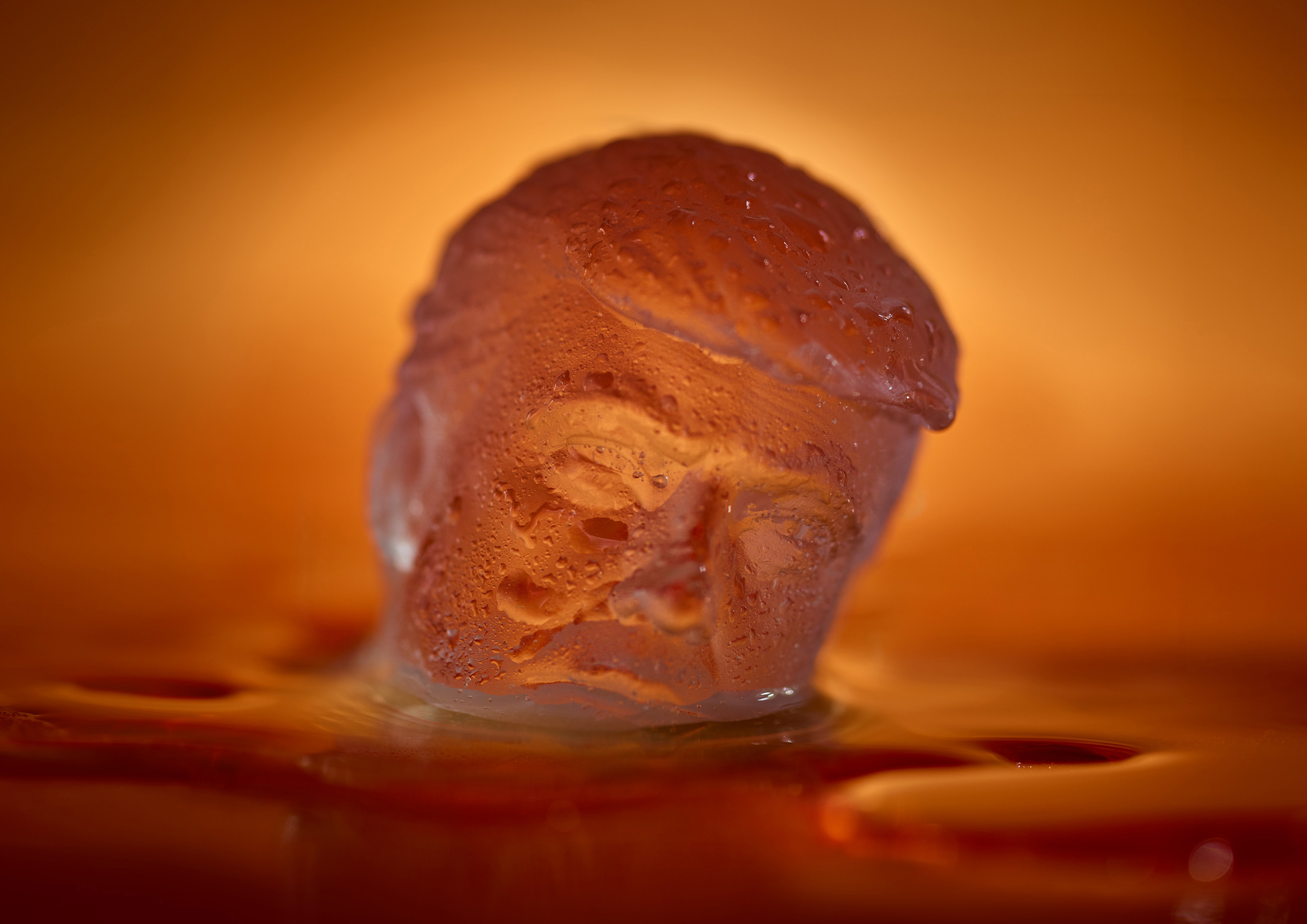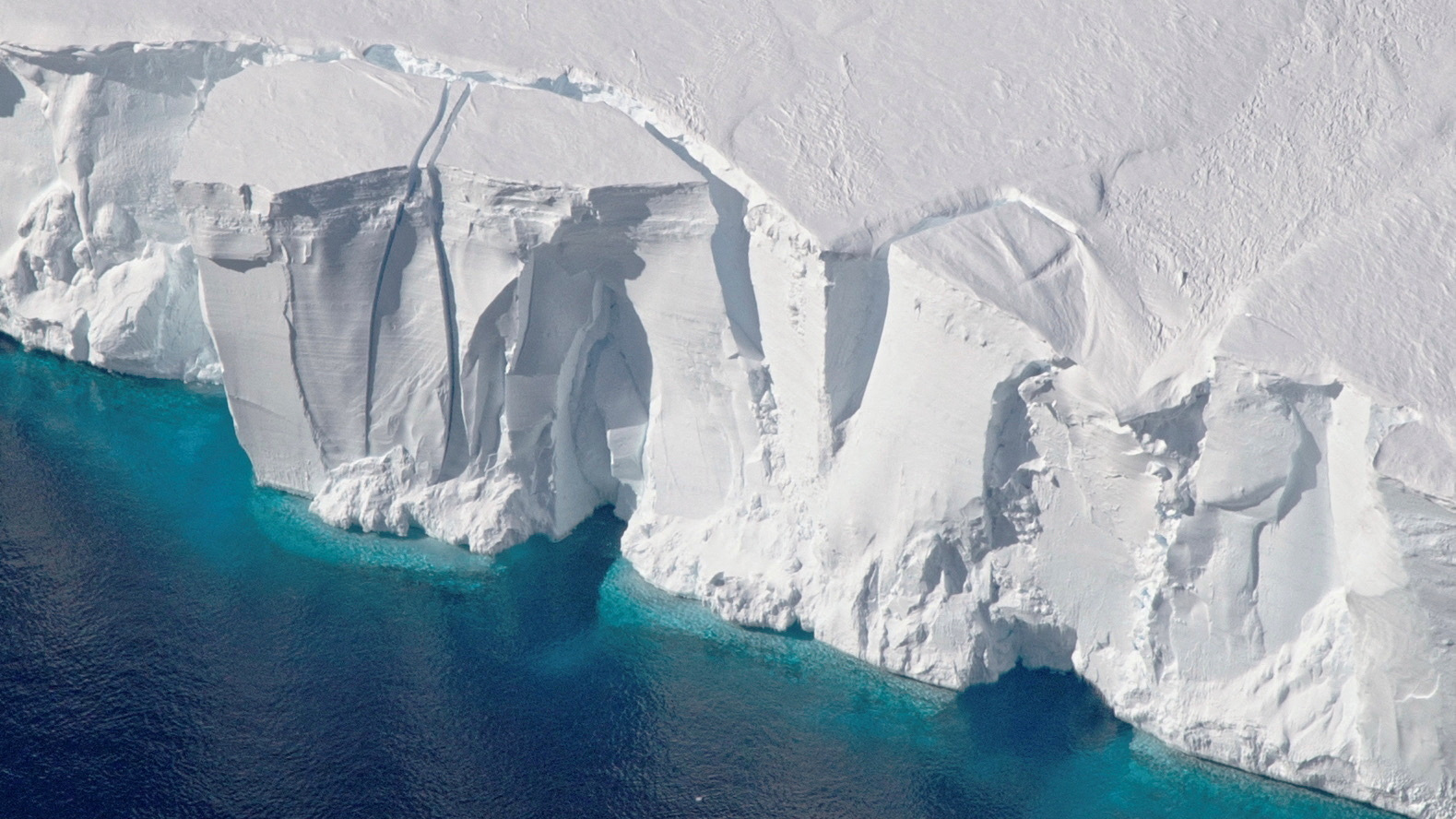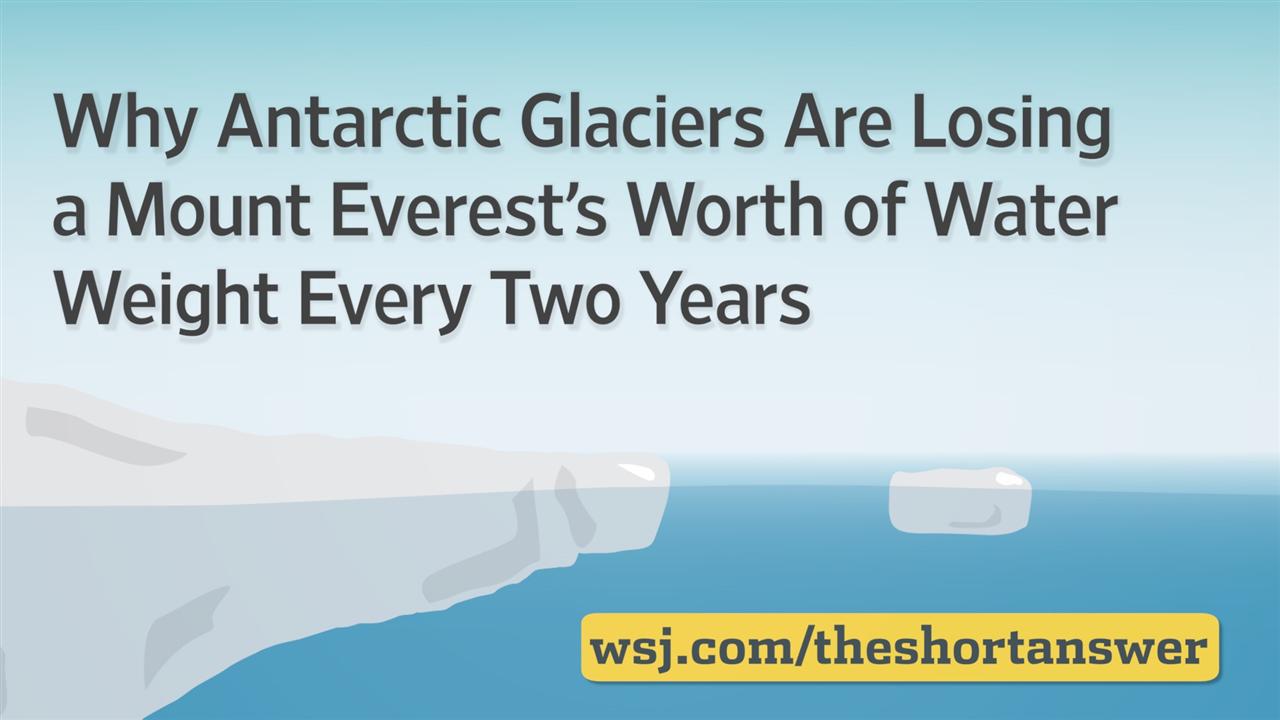
Why Trump is Watching the Antarctic Ice Melt (and What it Means)
You might be surprised to learn that former President Donald Trump, a figure often associated with skepticism about climate change, has had a notable, albeit indirect, relationship with the rapidly changing Antarctic ice. While his public statements have sometimes downplayed the severity of global warming, the scientific realities unfolding in the polar regions hold significant implications, not just for the planet, but potentially for economic and geopolitical strategies that might appeal to his “America First” agenda.
This post will explore why the unfolding drama of Antarctic ice melt is something that figures like Trump, and by extension, policymakers, would be keenly observing, and what these observations portend for our future.
The Shifting Landscape of Antarctic Ice: A Complex Picture
The narrative surrounding Antarctic ice is far from simple. While some regions have shown expansion, the overwhelming scientific consensus points to a net loss of ice, with profound consequences.
Areas of Concern: The Melting Giants
- West Antarctic Ice Sheet: This is a major focal point for scientists. Its rapid melting, particularly concerning the Thwaites Ice Shelf (often called the “Doomsday Glacier”), is a primary driver of global sea-level rise. If Thwaites collapses entirely, it could elevate sea levels by several feet, impacting coastal communities worldwide.
- Ice Shelves: These floating extensions of glaciers act as buttresses, holding back the massive ice sheets on land. As warmer ocean waters melt them from beneath, they weaken and can break apart, accelerating ice flow into the ocean.
The “Growing Ice” Counter-Narrative
It’s true that some localized areas of Antarctica have experienced ice growth. However, this data is often highlighted to create confusion or dispute the broader trend of warming.
- East Antarctic Ice Sheet: Historically considered more stable, some parts of the East Antarctic Ice Sheet have shown gains. Scientists attribute this to factors like increased snowfall in specific regions, which can temporarily offset melting.
- Interpreting the Data: It’s crucial to understand that localized growth does not negate the significant ice loss occurring elsewhere on the continent. The overall mass balance remains negative.
Why Would Trump Be Watching? Geopolitical and Economic Implications
Beyond the environmental crisis, the melting of polar ice presents a complex web of economic and strategic opportunities and challenges that could capture the attention of any leader focused on national interest.
Resource Accessibility and Shipping Routes
- Opening New Frontiers: As ice recedes, previously inaccessible regions of the Arctic and potentially Antarctica become more navigable. This opens up possibilities for:
- New Shipping Lanes: Shorter, more efficient routes could emerge, impacting global trade and logistics.
- Resource Extraction: Unlocking deposits of oil, gas, and minerals that were once frozen beneath the ice could become a reality, presenting significant economic incentives.
- Strategic Advantage: Control over these new routes and access to resources could translate into considerable geopolitical leverage.
National Security and Infrastructure
- Coastal Vulnerability: While the economic opportunities are enticing, the flip side is the threat posed by rising sea levels to coastal cities and military installations. Understanding the pace and extent of Antarctic ice melt is critical for long-term national security planning.
- Economic Disaster: As one report suggested, “Rapid Arctic ice melt sets the stage for economic disaster under Trump.” This highlights the potential for climate-driven events to destabilize economies, whether through extreme weather, resource scarcity, or mass displacement.
Trump’s Stance: A Paradoxical Observation?
President Trump’s public pronouncements on climate change have often been contradictory. He has referred to climate change as a “hoax” while simultaneously commenting on ice formations.
- Record Setting Melt: Despite claims that ice caps were “setting records” for growth, the reality has been the opposite. PolitiFact and other fact-checkers have noted his tendency to get the polar ice trends backwards.
- Greenland: A Case Study: Trump’s interest in purchasing Greenland, a territory with vast ice sheets, further underscores a potential focus on strategic assets and resources linked to polar regions, even if his understanding of the underlying climate dynamics was incomplete.
The Critical Role of Antarctic Ice Research
The scientific community’s meticulous monitoring of Antarctic ice is not just academic; it’s foundational to understanding our planet’s future.
- Unlocking Climate’s Past and Future: Ice cores drilled from Antarctica act as invaluable historical archives. They provide data on past temperatures, atmospheric composition, and even volcanic activity, offering crucial insights into long-term climate patterns and predicting future changes.
- Threats to Research: Actions that undermine scientific research, such as budget cuts or a disregard for climate science, directly impede our ability to gather this vital information, as noted in discussions about past administrations’ impact on Arctic research.
What This Means for You
The melting of Antarctic ice is not a distant, abstract problem. It has tangible implications for everyone:
- Sea Level Rise: If you live in a coastal area, or know someone who does, the prospect of rising sea levels directly impacts your community’s future.
- Extreme Weather: Changes in polar ice can influence global weather patterns, potentially leading to more frequent and intense storms, droughts, and heatwaves in your region.
- Economic Stability: Global trade, resource availability, and the cost of disaster recovery are all influenced by climate change.
Conclusion: Observing the Ice, Understanding the Stakes
Whether driven by a genuine concern for the planet, a strategic interest in new resources, or a desire to project national strength, paying attention to the Antarctic ice melt is essential. The scientific data paints a clear picture: the continent’s ice is diminishing, and this has profound, far-reaching consequences. For leaders and citizens alike, understanding these dynamics is not just an environmental issue; it’s an economic, social, and security imperative.
The melting ice presents a stark warning, but also a call to action. By supporting robust climate science, advocating for sustainable policies, and understanding the interconnectedness of our planet’s systems, we can better navigate the challenges and opportunities that the changing polar regions present.

Additional Information
It appears there might be a misunderstanding in the premise of your request. The provided search results do not indicate that Donald Trump is actively watching the Antarctic ice melt in a personal or observational capacity. Instead, the results predominantly focus on:
- Trump’s past statements and policies regarding climate change and polar ice: Many articles highlight his skepticism, downplaying of global warming, and policies that were seen as detrimental to climate science research.
- The scientific significance of Antarctic ice: The summaries emphasize how ice cores provide crucial data about past and future climate trends, and the dire consequences of Antarctic ice melt, such as sea-level rise.
- Contradictions in Trump’s claims about ice trends: Several results directly refute his claims that ice caps are “setting records” by pointing out that records are being set for melting.
Therefore, the title “Why Trump is Watching the Antarctic Ice Melt (and What it Means)” is not directly supported by the provided search results. It’s more accurate to analyze “How Donald Trump’s Stance on Climate Change and Antarctic Ice Melt Contrasts with Scientific Consensus and Implications.”
Let’s reframe the analysis based on the provided information:
Trump’s Climate Skepticism and the Antarctic Ice Melt: A Disconnect with Science and Global Implications
While the idea of Donald Trump personally “watching” the Antarctic ice melt is not borne out by the provided search results, his administration’s approach to climate science and the very real, accelerating melt of polar ice have significant implications. The provided search results highlight a stark contrast between Trump’s rhetoric and policies regarding climate change and the critical scientific understanding of Antarctic ice melt.
Trump’s Stance: Downplaying and Dismissal
Several of the search results (HuffPost, PolitiFact) directly address Donald Trump’s public statements on climate change and polar ice. For instance, he has been quoted as downplaying concerns about global temperature trends and even suggesting that polar ice caps are “setting records,” not for melting, but in defiance of predictions of their disappearance. These statements, as noted by PolitiFact, often contradict established scientific consensus, with Trump having previously labeled climate change a “hoax spread by China.”
The Assault on Climate Science
The Mother Jones article points to a broader concern: “President Donald Trump’s assault on science has put this invaluable resource [Antarctic ice] at risk.” This suggests that beyond his public statements, Trump’s administration implemented policies that could hinder critical climate research. The ability to study ice cores, for example, is vital for understanding past climate patterns and projecting future scenarios. Any cuts or de-prioritization of such research would have long-term consequences for our ability to address climate change effectively.
The Antarctic’s Growing Importance and the Reality of Melt
Conversely, the other search results underscore the immense scientific and environmental significance of the Antarctic ice sheet.
- A Climate Crystal Ball: The Mother Jones summary emphasizes that “the ice provides clues as to what’s in store for our climate down the road.” Ice cores contain trapped air bubbles and layers that act as a historical record of Earth’s atmosphere and climate, offering invaluable insights into past warming and cooling cycles.
- Sea-Level Rise and Global Disaster: The BBC Earth article (6) explicitly states, “Antarctica’s melting ice sheet should concern us all.” It highlights the catastrophic potential of this melt, particularly if the Thwaites ice shelf collapses, which would lead to significant global sea-level rise, directly impacting coastal communities worldwide.
- Challenging Assumptions: While the article from Climate Cosmos (2) notes that some evidence suggests Antarctic ice accumulation in certain areas, the overarching scientific consensus remains focused on the net loss of ice mass and its consequences. The research it mentions opens “new research questions that challenge fundamental assumptions about polar ice behavior,” but it does not negate the significant concerns about melt and its impacts.
Economic and Geopolitical Undercurrents
The ThinkProgress article (4) links “rapid Arctic ice melt” to potential “economic disaster under Trump,” suggesting that his anti-climate policies were juxtaposed with the growing economic and strategic implications of a warming Arctic and Antarctic. Furthermore, The Ink’s piece (7) touches upon geopolitical interests, mentioning Trump’s focus on Greenland and its potential connection to national security, hinting at a broader geopolitical calculus that might intersect with the changing polar landscape, even if not directly tied to a personal observation of ice melt.
What it Means: A Disconnect with Consequences
The “meaning” of Trump’s stance, as illuminated by these search results, is a profound disconnect between his administration’s perceived skepticism and the urgent scientific reality of Antarctic ice melt.
- Undermining Climate Action: A leader who downplays climate change and potentially hinders scientific research creates an environment where robust climate action is less likely. This can embolden fossil fuel industries and discourage international cooperation on climate mitigation.
- Increased Vulnerability: By not fully acknowledging or prioritizing the threats posed by Antarctic ice melt, such as rising sea levels, his stance could inadvertently increase the vulnerability of global populations and economies to these impacts.
- Scientific Misinformation: The repeated contradiction of established scientific findings contributes to public confusion and can erode trust in scientific institutions, making it harder to build consensus for necessary environmental policies.
In conclusion, while Donald Trump may not be actively “watching” the Antarctic ice melt in a literal sense, his administration’s policies and public statements have been widely seen as being at odds with the critical scientific understanding of this phenomenon. The real implication lies in the potential for his approach to hinder vital climate research, undermine global efforts to combat climate change, and ultimately increase humanity’s vulnerability to the far-reaching consequences of a melting cryosphere.






Leave a Reply